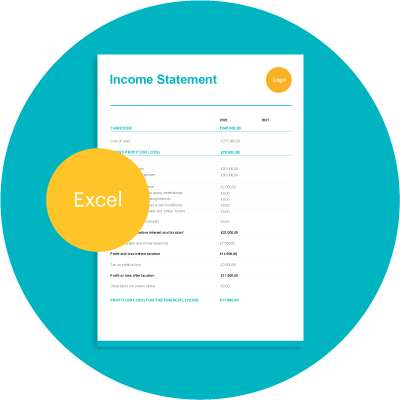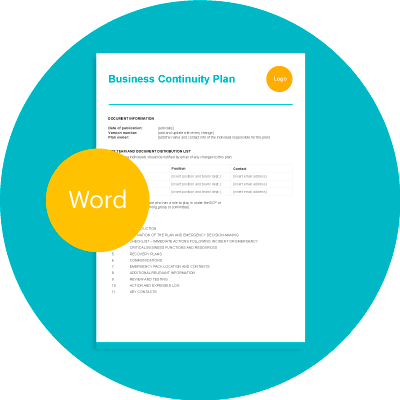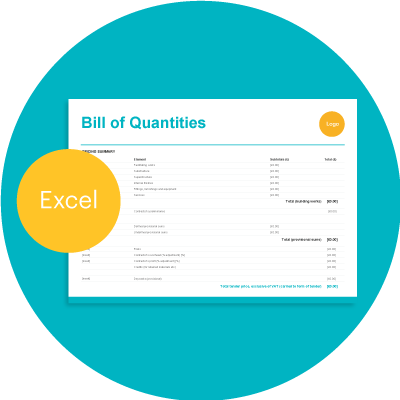Invoicing, bookkeeping & more
With Zervant, you get powerful invoice automation and bookkeeping tools in one intuitive web and mobile app.
Create Free AccountCash Flow Statement Template
When you can pay your bills, you don’t think about it. But when money’s tight, cash flow is the only thing on any small business owner’s mind.
A cash flow statement can help you to manage your finances and avoid the worst surprises. To help you prepare one, we’ve created a free cash flow statement template. We’ve also written this article to help you use it.
Just starting up? You might like our guides for small business owners on:
Table of Contents
Cast Flow Statement Template
Free invoicing and estimate software Create Free Account
Download: Excel
Free invoicing and estimate software
Download: Excel
What is a cash flow statement?
It is a financial statement that reports the cash flowing in and out of a company over a particular period. It shows:
- The source(s) of the cash and what it was spent on.
- The total change to the company’s cash levels over the period.
- The company’s cash level at the end of the period.
What is it used for?
Stakeholders use cash flow statements to assess the liquidity of a company. They help them determine whether a company (a) has enough cash available to pay its debt obligations, and (b) can fund its operating expenses as they arise.
Just because a business is profitable, it does not mean it will survive long-term. Cash is king!
Tip: If you’re looking for more ways to stay on top of your finances, try our invoicing software. It notifies you as soon as an invoice is overdue, and you can create sales reports full of useful data.
Where does it fit in?
A cash flow statement is prepared alongside a balance sheet and an income statement. Together, these documents make up the core financial statements of a company.
We’ve created free templates for these statements too (find them here and here). The statements should cover the same periods. The balance sheet is a snapshot of a company’s assets at a point in time, so it should be the end of the period.
Do I need a cash flow statement?
It depends. You do not need to prepare a cash flow statement for your UK company if:
- Your company qualifies (meets certain conditions related to its size). The company must qualify as a small company or micro entity. The definition of small company can be found in ss 382–384 of the Companies Act 2006 (“the Act”). As at the time of writing, a small company is one that meets two or more of the following requirements in a year: (i) it has a turnover of not more than £10.2 million (ii) a balance sheet total of not more than £5.1 million (iii) the number of employees is not more than 50. It cannot be an excluded company listed in s 384 (e.g., public company, operates in insurance or banking) and if it is part of a group, it must meet the specific rules that apply to groups in s 383 of the Act. A micro-entity is smaller still (see s 384A of the Act). AND
- You choose to apply the FRS 102(1A) or FRS 105 accounting standards when you prepare your company’s accounts.
If your company does not qualify, you must follow different accounting standards (i.e., FRS 102 or IAS). These require companies to prepare cash flow statements. For more information on accounting standards, read this article.
In any event, many small companies choose to prepare a cash flow statement, whether they have to or not. Why? Because it has many benefits. An investor or creditor might ask you to too.
Tip: Thinking about instructing an accountant to help? Read our guide on small business accounting before you do.
Cash flow statement breakdown
So, now you’ve got the template, let’s look at what’s in it.
The sections and calculations in a cash flow statement
A cash flow statement must report cash flows from three types of activities. These are operating, investment and financing activities.
The statement calculates the net cash flow for each activity type. This is the total change in the company’s cash levels over the period.
So, for example, let’s say a company received a £50,000 loan on day 1. It repaid £10,000 on day 30 and had no other financing activity cash flows to report. The net cash flow from the company’s financing activities would be £40,000.
The net cash flows are then added together to calculate the total net cash flow. There’s also usually a reconciliation between this figure and the change in the company’s actual cash levels from the start of the period compared to the end. Both should match.
Period comparisons
A cash flow statement usually shows figures from the previous period too. Why? Because it helps you to compare and analyse the performance of the company. Our template follows this format.
So, that’s the structure of the statement. We need to understand where to put our cash flows before we start filling it in though. So let’s look at what operating, financing and investing activities are.
Cash flows from operating activities
Operating activities are the main, revenue-producing activities of a company. Example cash flows from these activities include:
- Cash receipts from the sale of goods and rendering of services
- Cash payments to suppliers for goods and services
- Cash payments to and on behalf of employees
For a complete list see section 7.4 of FRS 102. Most, if not all companies will have these types of cash flows to report.
Cash flows from investing activities
Here, the investing activities of a company are any acquisitions or disposals of long-term assets or investments. Example cash flows include:
- Cash payments to acquire property, plant and equipment, as well as intangible assets and other long-term assets
- Cash receipts from sales of the above items
For more examples, see section 7.5 of FRS 102.
Cash flows from financing activities
According to the Financial Reporting Council, financing activities are:
“activities that result in changes in the size and composition [make up] of the contributed equity [capital] and borrowings of an entity.” – Section 7.6 of FRS 102
Example cash flows include:
- Cash proceeds from issuing shares
- Cash payments to owners to acquire or redeem shares
- Cash repayments of amounts borrowed
Filling out the cash flow statement
We now know how to structure a cash flow statement and where to present different cash flows. Follow these steps to fill it out:
Step 1: Decide how to identify cash flows
There are two methods that you can use. Our cash flow statement template uses the indirect method. The other option is the direct method. To find out more about it, read section 7.9 of FRS 102.
Identifying cash flows using the indirect method
The indirect method is the most popular method. It identifies a company’s cash flows using information from the company’s income statement and balance sheet for the same period.
This means it does not report every individual cash flow. Instead, it calculates the net cash flow indirectly. To find out how it works in practice, let’s move on to the next step.
Step 2: Calculate the net cash flow from operating activities
We start the calculation with a figure from the company’s income statement. This is the net profit (or loss) figure. Read our guide on how to use our income statement template to learn how to identify it. It’s sometimes called net income.
Adjust the net profit figure
We then adjust the profit (or loss) figure. Why? Because recorded profit does not always equal cash in the bank, and we want a clear account of the cash generated from operating activities. What do we adjust it with? The value of:
- Non-cash items, and
- All other items for which the cash effects relate to investing or financing.
Non-cash items
These are items that were deducted as expenses when the net profit figure was calculated. However, we are not concerned with all expenses here. Only the expenses with no corresponding cash outflow.
Examples include depreciation and amortisation expenses. To find out more about these, read our guide on our income statement template.
To adjust the net profit figure, add the value of any non-cash items back to it. To do this, insert them as positive figures in the excel template.
All other items for which the cash effects relate to investing or financing
We know that we must report operating, investing and financing cash flows separately. So, if a financing or investing cash flow was used to calculate the net profit figure on the income statement, we need to correct this on our cash flow statement. We do this by:
- Adjusting the net profit figure, and
- Showing the cash flow under the correct section on the cash flow statement.
How we adjust the net profit figure depends on how the cash flow figure was used in the income statement. If it increased the profit figure, we deduct it in the operating activities section of the cash flow statement. If it decreased the profit figure, we add it back on.
Example items include a gain or a loss from the sale of property, plant or equipment. Both would later be shown under the investing activities section of the cash flow statement.
We also need to do something similar with income tax cash flows (which we discuss below).
Report changes to the company’s net working capital
This is the next step that we need to take to calculate the net cash flow from operating activities. The relevant changes are changes to the company’s:
Why? Because the changes impact the cash that the company has available at the end of the period. For example, if more people owe the company money, there’s less cash available. If the company owes more people money, there’s currently more cash available.
Calculating the changes
To work out the changes, use information from the company’s balance sheet. Specifically, the balance sheet for the current period and the previous one.
Compare the two, and identify:
- Whether there has been an increase or a decrease in the level of each item, and
- If so, by how much.
Reporting the changes
What we do next depends on the item and its effect on the cash available.
If the change reduces the cash available, it’s an outflow. We enter these as negative figures on the cash flow statement. If the change increases the cash available, it’s an inflow, and it’s entered as a positive figure on the statement.
This should keep you right. Our statement of cash flows template has some reminders too.
| Change to: | Type of change: | Effect on cash available: | Outflow vs inflow: |
| Inventory | More | Reduces | Outflow (-) |
| Less | Increases | Inflow (+) | |
| Accounts receivable | More | Reduces | Outflow (-) |
| Less | Increases | Inflow (+) | |
| Accounts payable | More | Increases | Inflow (+) |
| Less | Reduces | Outflow (-) |
Calculate the net cash flow from operating activities
The penultimate step is to present any other operating activity cash flows that must be shown separately. Income tax cash flows (payments or refunds) are one example. If you are following the FRS 102 accounting standard. Check the relevant accounting standard that you are using for other examples. If a tax cash flow relates to investing or financing activities, it can be shown separately in the relevant section of the cash flow statement. See section 7.17 of FRS 102 for more information.
Beware though! If the cash flow was included in the net profit figure calculation, you’ll need to make another adjustment before you report it separately. This ensures it isn’t accounted for twice.
We can then calculate the net cash from operating activities. To do this, add all the cash flows together. If you use our template, it will calculate this for you.
Step 3: Calculate the net cash flow from investing and financing activities
The next sections of the cash flow statement are straightforward to complete. You just need to include any investing or financing activity cash flows. Remember to include any that you adjusted the net profit figure for, plus extras.
Step 4: Calculate the total change to cash
Add the net cash flows together to calculate the total net change to cash. Our excel statement of cash flows template will do this for you.
A positive number = a positive cash flow. This means more cash came into the company during the period than went out. A negative number = a negative cash flow. This means the company spent more cash than it received.
A negative cash flow isn’t always a bad thing though, as Investopedia highlight. It might mean you’re investing your money in growth.
Step 5: Report actual cash levels
This is the final section of the cash flow statement. You must note the company’s cash and cash equivalents levels at the start of the period and the end of the period.
The starting figure will be the figure stated at the end of the cash flow statement for the previous period. The end of period figure will be the company’s cash and cash equivalent levels at that date.
What are cash equivalents?
Cash equivalents
According to the FRC (who prepare FRS 102), they are:
“short-term, highly liquid investments that are readily convertible to known amounts of cash and that are subject to an insignificant risk of changes in value. Therefore, an investment normally qualifies as a cash equivalent only when it has a short maturity of, say, three months or less from the date of acquisition.” – Section 7.2 of FRS 102
Many companies might not have any cash equivalents. However, one common example is a bank overdraft which is repayable on demand. If this is overdrawn at the end of the period, the extent of the overdraft must be treated as a negative cash balance.
If an overdraft is not repayable on demand, any extension or increase in the amount available should be treated as a loan. This change must be included on the cash flow statement as an inflow from financing activities.
Step 6: Reconcile
Once you’ve calculated your cash levels, identify the change over the period. Check that this matches the total net cash change you calculated at step 4. If the figures don’t match, you’ll need to work out why.
If you’re using our excel statement of cash flows template, the check row will do this for you once the other cells are complete.
Finally, check whether the final cash at the end of the year figure matches the figure in the balance sheet for the same period. If it doesn’t match, you’ll need to present a reconciliation that explains the difference. – Section 7.20 of FRS 102
The benefits of a cash flow statement
A cash flow statement will help you understand how your business is performing. You can immediately see where your money is coming from, and what it is being spent on.
You can also use it to:
- Identify areas for improvement and adjust key initiatives or strategies
- More effectively prepare and manage future budgets
- Manage / oversee your team of employees
Key takeaways
A cash flow statement can tell you how your cash levels changed over a period, whether it’s a month, quarter or year.
Use our statement of cash flows template to get to grips with your business finances. If you find you’re struggling with cash flow, combine it with our free invoicing software to get paid quicker. You can even use it on the go if you download our free app!
The content and template contained on this website are for marketing and general information purposes only and should not be used by any party as a substitute for specific advice of any nature relevant to particular circumstances.


